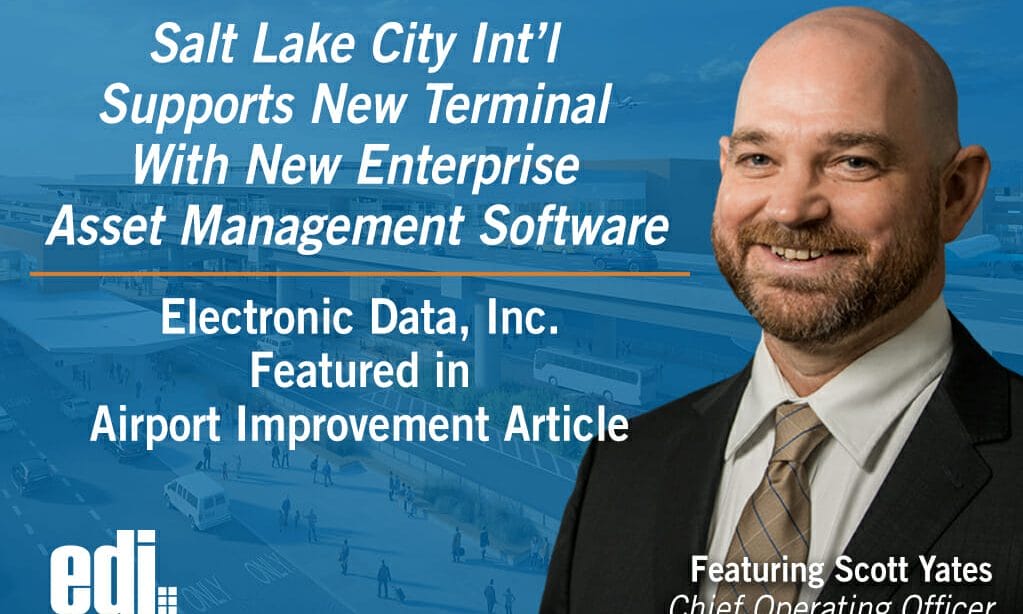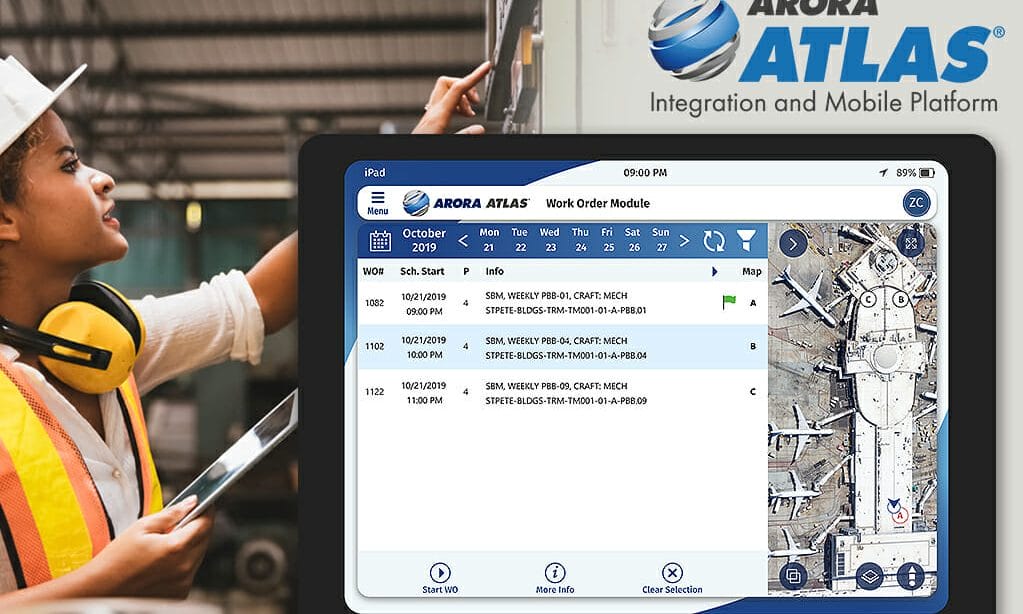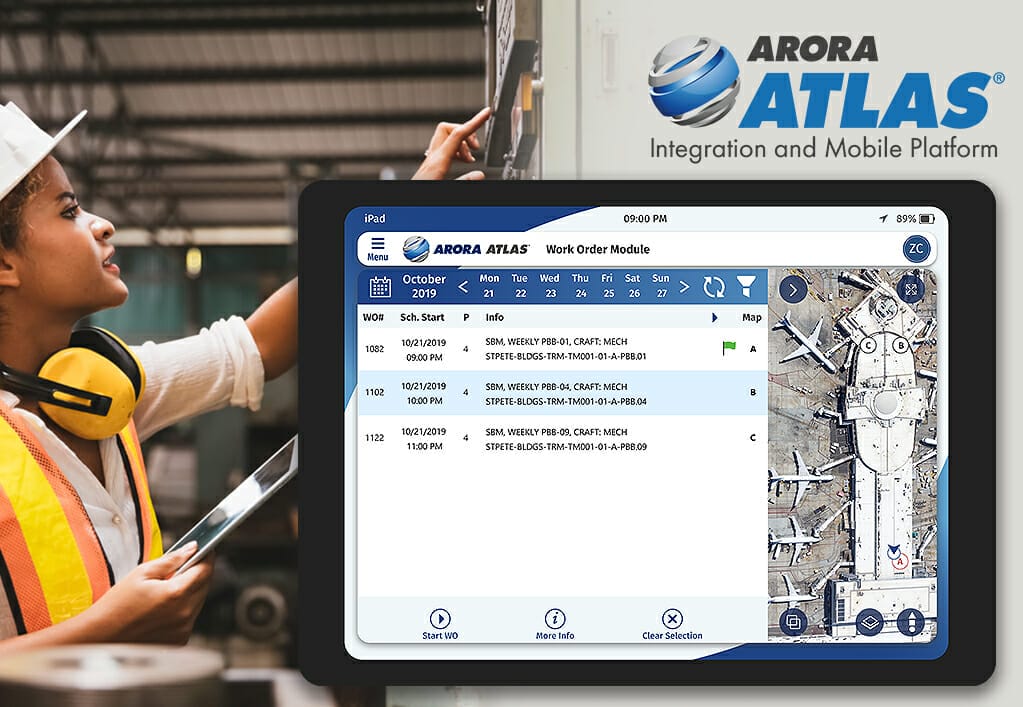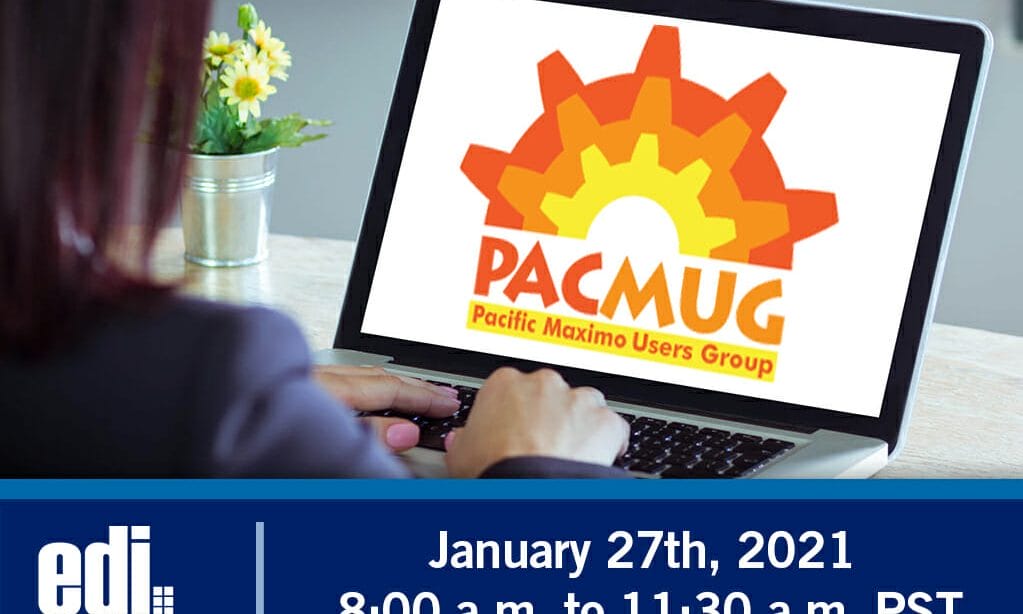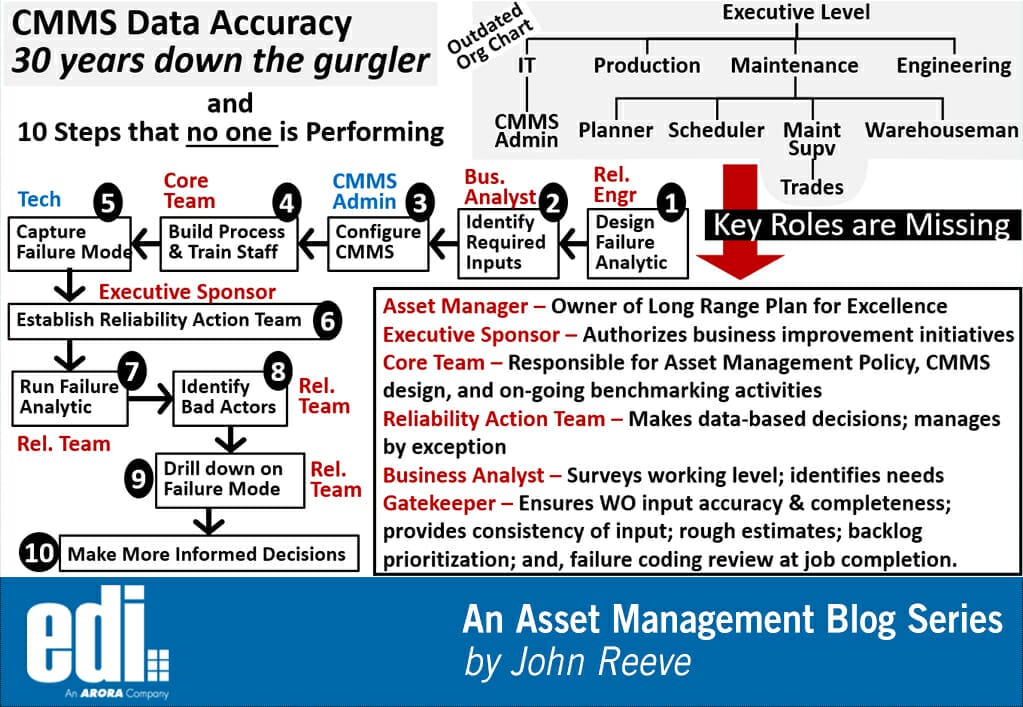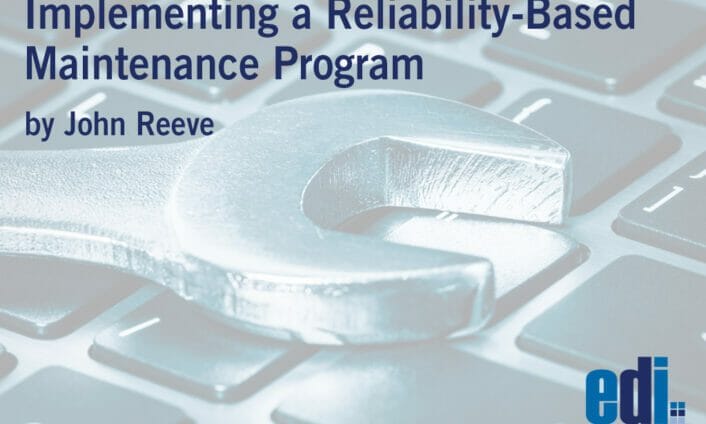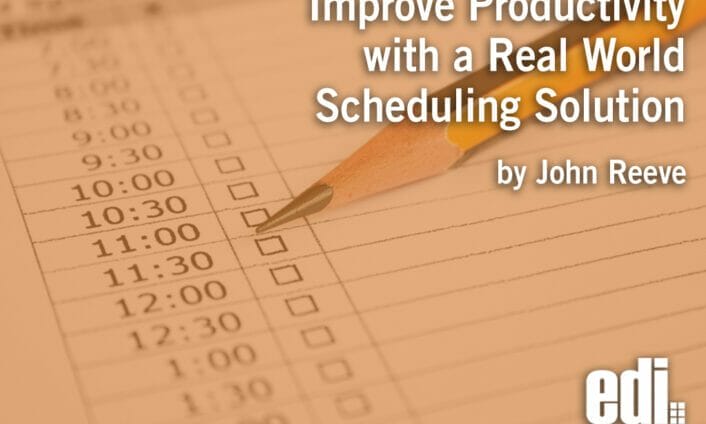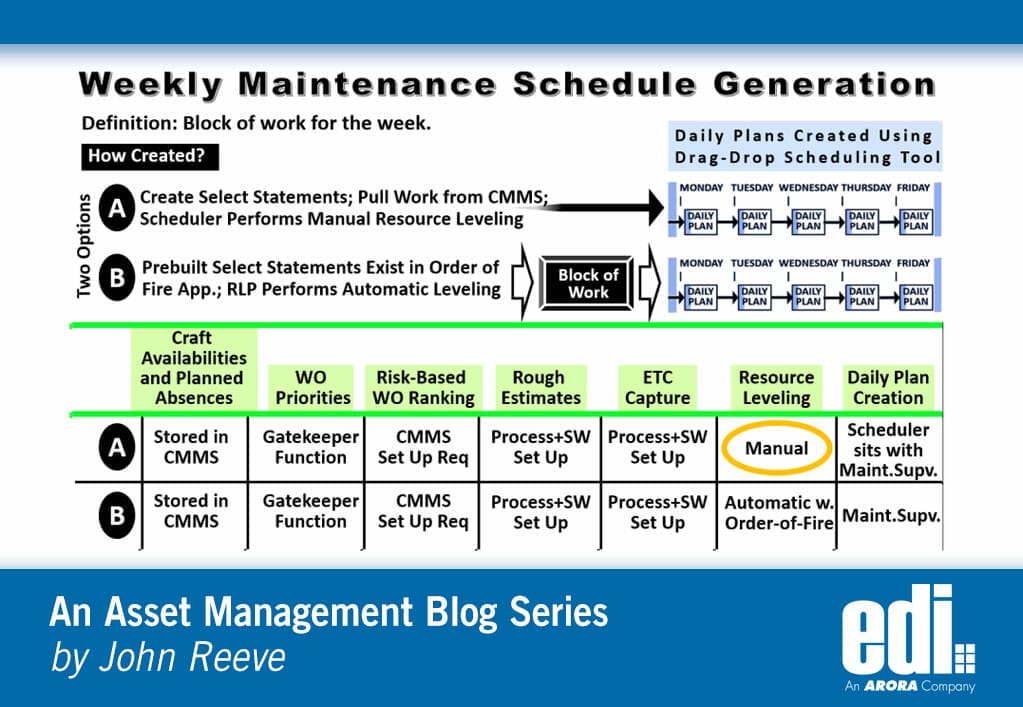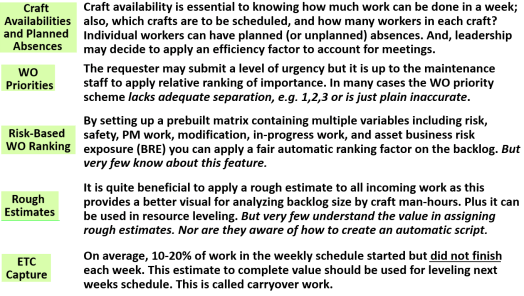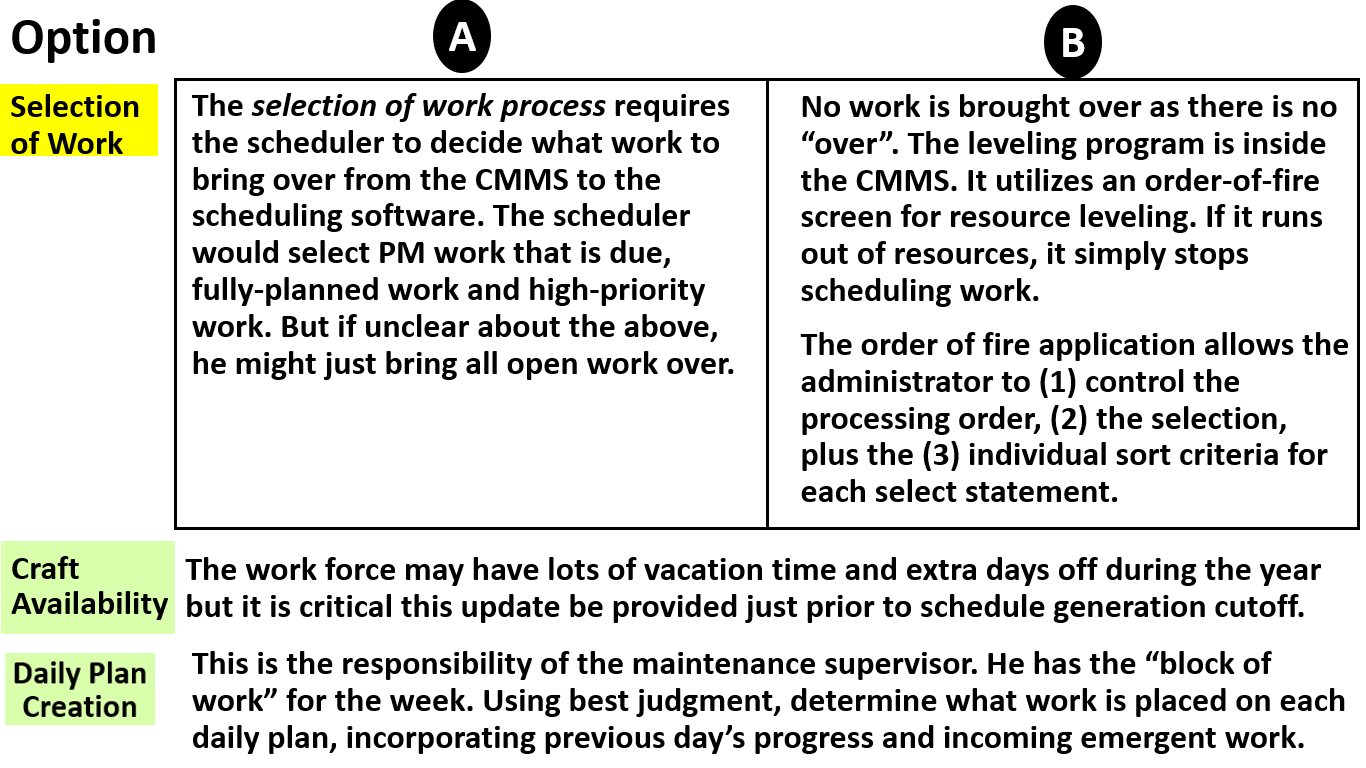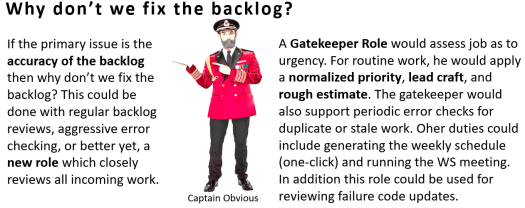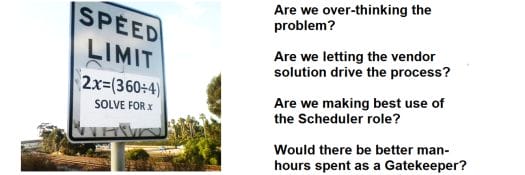By: John Reeve
The Outdated Org Chart Structure is the Main Problem
If the current organizational structure continues, there will be little to no improvement in CMMS data accuracy in the foreseeable future. Stakeholders frequently complain about poor data but fail to take corrective action. Or, they simply load up the Planners with more data-check activities since they are the supposed CMMS gurus. So, even with the vast improvement in CMMS technology and feature-rich products, here we are 30 years later with horrible data. It seems no one wants to be held accountable.
Everyone Misses the Clerical Staff
In the 1980’s clerical staff performed much of the CMMS data entry and work order filing. Not that clerical captured everything we needed, but at least it was a position we could mold on-the-fly to accommodate needs. These positions were mostly eliminated however in subsequent years shifting the burden for accuracy to the working level, planners, and sometimes CMMS administrator. The working level never really accepted this accuracy role – or understood it. In summary, there has been no attempt to improve the capture of failure data in support of failure analysis.
What Information Do We Need from the CMMS?
From a reliability standpoint, it would be great to know the worst performers. And with that in hand, decisions can be made to eliminate the cause of failure. Better reliability means better availability, which in turn, optimizes O&M costs. The 10-step flow chart shows how failure data can be captured, analyzed and acted upon. But, key roles (that are missing) are needed to do this.
Key Roles (that are missing)
Key roles essential to knowledge management are shown in the post main picture. This modern-day organization cares about data and extracting competitive information. As to the new roles, they could be new duties — or new positions. With the emphasis on machine learning, data is all the more important. To put it bluntly, leadership needs to (1) address weak points in data capture, (2) configure software and process to improve data quality, and (3) implement data reviewers such as a Data Analyst to extract knowledge. Failure analysis should be the cornerstone of the CMMS.
Note: This position or positions could go by many names: Gatekeeper, Reliability Engineer, Business Analyst, Asset Manager, or even Data Scientist.
Failure Data Originates at the Working Level
Capturing any type of work order feedback is difficult. Examples include work order status, actual labor hours, parts issued, outside service costs, job status, actions performed, and failure coding. Here is a list of ways to help the working level:
- Provide mobile solution with all of the necessary inputs for work order completion.
- Conduct training (CMMS navigation and precision maintenance training)
- Listen to their needs; conduct surveys; find out what information they need to do a better job.
- Ensure the planning-scheduling process is working smoothly.
- Inquire about missing foundation data, such as assets. Ask about difficulty searching for parts.
- Ask about failure coding. Is the data capture process clear? An example would be: Failed component should be entered by Technician. The component problem could be entered by Technician but possibly by Supervisor. The cause code could be entered by Technician, Supervisor, or Reliability Engineer. Capturing the failure mode on the work order is best practice.
Where Has Leadership Failed?


